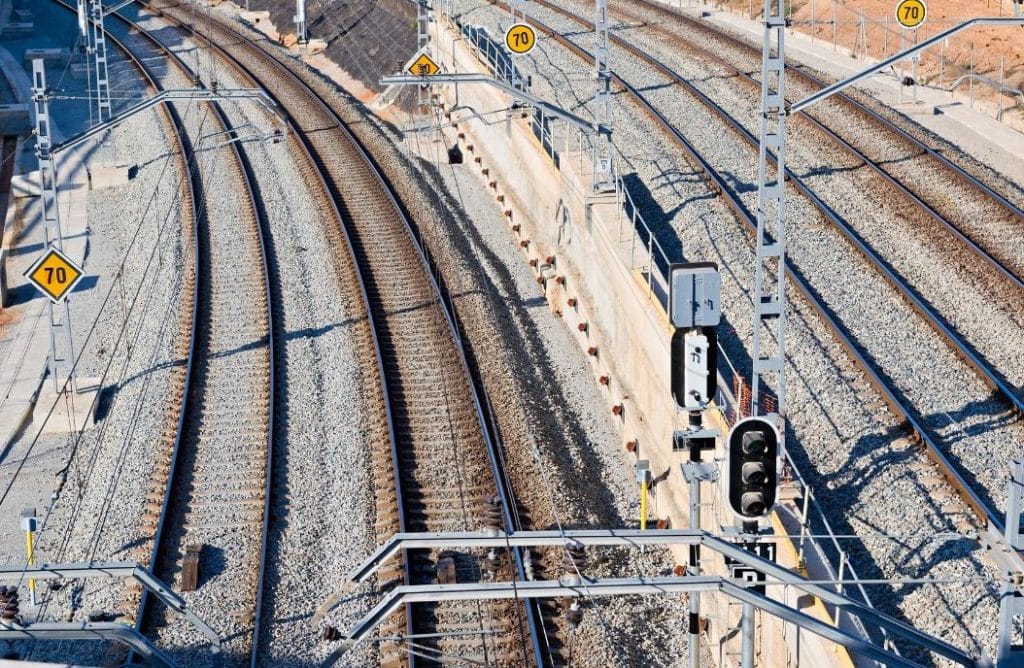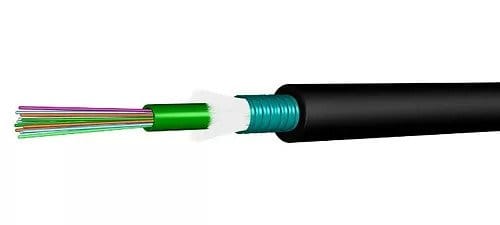Railway safety is essential, making reliable traffic monitoring systems a must. So there is an evident need to upgrade train control systems to align with modern technology, helping improve services and safety for passengers and workers.
This is where fibre optic cables come in.
Fibre optic solutions can rocket trains into the 21st century, making them safer and more reliable. Find out how by reading the rest of this blog.
What Are Railway Signals?

Railway signals are visual display devices used on railways to convey critical information or instructions, so train drivers know how to proceed. In short, railway signals are essential for maintaining safe and efficient train operations.
For example, using a combination of colours, lights, and shapes, railway signals indicate to train drivers the speed at which to advance or warn that the line ahead is blocked.
The most common types of railway signals include:
- Stop Signals
- Caution Signals
- Clear Signals
- Diverging Route Signals
- Shunting Signals
- Position Light Signals
- Semaphore Signals
From time to time, railway signals experience failures, affecting passengers’ journeys and the overall running of a network.
The failure is typically due to the system lacking the required information. This loss of critical data means that train drivers don’t know whether it’s safe to proceed, resulting in delays; railway systems can only allow trains to move when it knows it’s safe to.
Often, a staff member must locate the failed component and fix the problem, which takes time.
Railway signals are also vulnerable to the environment, i.e. flooding, hot weather, or lightning strikes.
Thankfully, fibre optic cables can help to mitigate these issues, making for a smoother journey for passengers and effective time management for railway staff.
Additionally, reliable and weather-resistant fibre optic solutions for railways increase safety for everyone.
How Does A Railway Network Utilise Fibre Optic Cables?

As mentioned, railway safety is paramount.
Furthermore, railway networks are experiencing a growing demand to meet capacity needs, making upgrades for ageing signalling systems necessary.
Fibre optic cables can improve various areas on a network, some of which are covered below.
1. Vibration Monitoring
Distributed Acoustic Sensing (DAS) uses fibre optics to sense and monitor vibrations. A railway line can install this fibre optic solution to help them detect obstacles on the track, wheel damage, and locate the train’s position, amongst other things.
2. Data Transmission
Optical fibre cables transfer data via pulses of light. The speed at which data is transmitted is substantially faster than those delivered electronically. High-speed data transmissions enable train staff to receive important information quickly, helping them to react and respond accordingly.
3. Long-Distance Communication
Fibre optic cables can provide information over long distances, enabling train drivers to learn about real-time events near the monitored area.
4. Security
Since fibre optic cables are non-metallic, they are immune to electromagnetic interference (EMI). In short, signals are unaffected by environmental electrical noise, so data remains strong and secure. Also, sensitive data is encrypted as ciphertext, making it difficult for hackers to access.
5. Safety and Reliability
As mentioned, fibre optic cables are weather resistant. They are a highly durable cable choice and can survive most weather conditions. The high immune levels of fibre optics mean they experience fewer outages, making them more reliable for networks and increasing railway signal connectivity.
How Can The Train Industry Use Fibre Optic Cables?

By utilising fibre optic cables, train industries can enhance many aspects of their networks, some of which we have covered below.
- Fibre optic cables can assist with the effective movement of trains and efficiently report their positions.
- Optical fibre cables help detect rail and wheel defects.
- Fibre significantly enhances onboard internet for train users.
- The management of level crossing safety can be improved via fibre optic cables.
- Fibre solutions can detect people trespassing on the tracks.
- Installing optical fibre cables can improve the relay of important information regarding train control.
- Fibre cables can effectively transmit extensive data.
Overall, fibre optic technology helps enhance necessary applications within the train industry, increasing railway safety and performance.
Which Fibre Optic Cables Can Be Used For Railway Signals?

Steel CST fibre optic cables are designed for applications requiring a high level of mechanical protection. These cables are flame-resistant, rodent-resistant, and highly rugged, so they make a practical railway signal fibre optic cable.
To effectively manage multiple fibre cables, fibre cassettes are essential. Fibre cassettes provide splicing solutions and integrated patch cords.
You use fibre optic splicing to connect two cables, i.e. when a line needs to be longer for a cable run.
A fibre patch cord, sometimes called a fibre jumper cable, has connectors at both ends; they connect different devices.
To conclude, fibre optic technology rockets railway networks into the digital age, updating the day-to-day operations of trains.
As mentioned, there are many advantages to installing fibre optics for railway signals; however, the most prominent is that it increases reliability and safety, which is paramount for train users and staff.
If you want to know more about the fibre optic cable services that Altimex offers, get in touch with us today. We offer a broad range of services, including fibre optic services, lighting solutions, and electronic manufacturing.


